No-Stitch Vitrectomy
 Surgery is a big decision and will be discussed with you in full detail by your surgeon. Your surgeon will extensively review with you the nature of the problem with your eye. The indications for vitreous and retinal surgery are numerous and span a wide variety of problems inside the eye.
Surgery is a big decision and will be discussed with you in full detail by your surgeon. Your surgeon will extensively review with you the nature of the problem with your eye. The indications for vitreous and retinal surgery are numerous and span a wide variety of problems inside the eye.
Indications for Surgery
Some of the most common reasons for surgery include:
- Blood inside the eye cavity (vitreous hemorrhage)
- Retinal detachment
- Scar tissue on the retina (wrinkled retina)
- Macular Hole
- Wet Macular Degeneration
- Blood underneath the retina
- Bleeding in the wall of the eye
- Swelling in the center of the retina
In addition, a possible alternative to surgery, and the risks and benefits of surgical treatment compared to nonsurgical treatment will be discussed. This process is called informed consent and together, we will help you make the best possible decision.
Surgery will only be recommended if the doctor believes that the potential benefits outweigh the potential risks. The risks of surgery include, but are not limited to, infection, bleeding, retinal detachment, scar tissue formation, optic nerve damage, cataract, droopy eyelids, and double vision. Often, these complications can be correct if they occur; however, there is always a small risk of permanent vision loss.
The Benefits
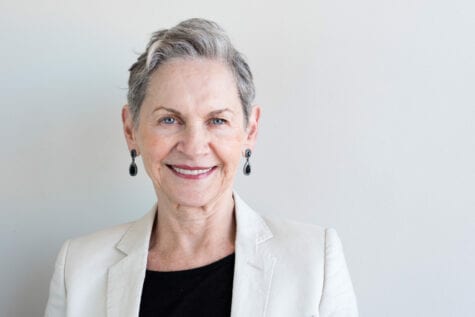 The type of surgery performed is very complex and is custom-designed to solve the particular problem in your eye. The field of vitreous and retinal surgery includes many different procedures and these are used in different combinations as needed. The operations are performed using a special microscope and very sophisticated equipment.
The type of surgery performed is very complex and is custom-designed to solve the particular problem in your eye. The field of vitreous and retinal surgery includes many different procedures and these are used in different combinations as needed. The operations are performed using a special microscope and very sophisticated equipment.
One of the many advantages of having surgery at the Largo Ambulatory Surgery Center is that we have the most advanced equipment available. From the time the Vitrectomy Surgery began in the mid-1970s, the operation required that incisions be made in the skin of the eye followed by three incisions in the white wall of the eye. These incisions require at least six stitches to close. Since 2003, we have had instruments that are 75% smaller than the traditional instruments. This makes it possible to do the surgery without making any incisions in the skin or wall of the eye and therefore does not require stitches to close the three tiny operative wounds.
We call this “No-Stitch Vitrectomy” and this type of surgery represents an extraordinary advancement in our field. Drs. Krisch and Hairston were the first Retina Specialists in the Tampa area to perform this type of surgery and have accumulated vast experience with the techniques. The major advantages of No-Stitch Vitrectomy are that the operation typically takes less time, the patient usually experiences much less post-operative pain, and the vision usually recovers sooner following surgery. Because the instruments used in a No-Stitch Vitrectomy are so much smaller and more delicate than the traditional instruments, it can be more technically challenging for the surgeon. Approximately 90% of all retina surgery can be performed with a No-Stitch Vitrectomy. Your surgeon will discuss with you whether No-Stitch Vitrectomy is appropriate for your condition.
The Operation
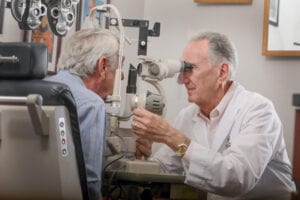 During the surgery itself, the vitreous gel (the “vitrectomy” part of the surgery) is removed first. The vitreous gel is replaced by salt water and does not grow back. The eye does not require vitreous to function properly. Any blood in the eye will be removed. Scar tissue present on the surface of or underneath the retina (the epiretinal delamination”) is then removed. Patients with severely impaired retinal circulation or new blood vessels growing on their retina will undergo a widespread laser treatment called a panretinal photocoagulation. Holes in the retina are treated with laser or cryotherapy (freezing). Retinal detachments are repaired by removing the fluid from the space underneath the retina and sealing the retina holes with laser or freezing treatment. A plastic band may be sutured to the outside wall of the eye to treat a retinal detachment. This procedure is called a scleral buckle and the elastic band remains on the eye permanently.
During the surgery itself, the vitreous gel (the “vitrectomy” part of the surgery) is removed first. The vitreous gel is replaced by salt water and does not grow back. The eye does not require vitreous to function properly. Any blood in the eye will be removed. Scar tissue present on the surface of or underneath the retina (the epiretinal delamination”) is then removed. Patients with severely impaired retinal circulation or new blood vessels growing on their retina will undergo a widespread laser treatment called a panretinal photocoagulation. Holes in the retina are treated with laser or cryotherapy (freezing). Retinal detachments are repaired by removing the fluid from the space underneath the retina and sealing the retina holes with laser or freezing treatment. A plastic band may be sutured to the outside wall of the eye to treat a retinal detachment. This procedure is called a scleral buckle and the elastic band remains on the eye permanently.
Sometimes, your surgeon will have to remove a cataract if the retina cannot be clearly visualized. You will usually be informed of this necessity prior to surgery. A lens implant is placed inside the eye after the cataract is removed. At the end of surgery, the doctor will decide whether to leave the vitreous cavity filled with saltwater or to replace the salt water with a gas or silicone oil. Usually, this step is planned before surgery, however, sometimes a doctor will discover something inside the eye that requires him or her to alter the plan. A patch and a protective shield will be taped over the eye at the end of surgery.
Depending upon the complexity of the surgery, the time required to perform the operation ranges from 20 minutes to 2 hours. Most operations can be performed in about an hour. We will give you an estimate of the time required for your surgery in the preoperative discussion.
Schedule your Retina Evaluation today
Call (727) 581-8706 to schedule your appointment
Meet Your Retina Care Specialists
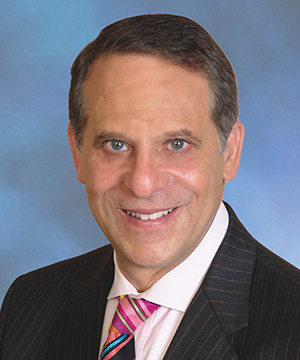 Leonard S. Kirsch, MD is a fellowship-trained vitreous and retina specialist. He is internationally known for the numerous papers and lectures he has presented here and abroad. Dr. Kirsch is currently an active participant in ongoing research to find new treatments for diseases of the retina. His expertise in the most advanced diagnostic and treatment techniques of all diseases of the retina, macula, and vitreous make Dr. Kirsch one of the elites in his field. In the Tampa Bay area, Dr. Kirsch pioneered the use of Photodynamic Therapy with Visudyne©, and intravitreal Macugen©, Lucentis©, and Avastin© for the treatment of age-related macular degeneration. Dr. Kirsch was also among the first surgeons in Florida to perform 25 gauge “no-stitch” vitrectomy in 2001. He is certified by the American Board of Ophthalmology and is a fellow of the Royal College of Surgeons of Canada.
Leonard S. Kirsch, MD is a fellowship-trained vitreous and retina specialist. He is internationally known for the numerous papers and lectures he has presented here and abroad. Dr. Kirsch is currently an active participant in ongoing research to find new treatments for diseases of the retina. His expertise in the most advanced diagnostic and treatment techniques of all diseases of the retina, macula, and vitreous make Dr. Kirsch one of the elites in his field. In the Tampa Bay area, Dr. Kirsch pioneered the use of Photodynamic Therapy with Visudyne©, and intravitreal Macugen©, Lucentis©, and Avastin© for the treatment of age-related macular degeneration. Dr. Kirsch was also among the first surgeons in Florida to perform 25 gauge “no-stitch” vitrectomy in 2001. He is certified by the American Board of Ophthalmology and is a fellow of the Royal College of Surgeons of Canada.
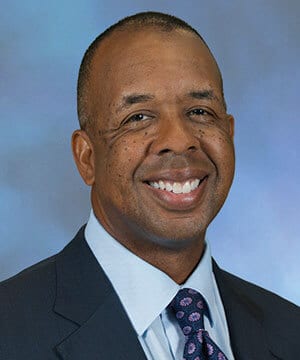 Richard J. Hairston, M.D. is a vitreous and retina specialist. He joined The Eye Institute in June 2001 coming to us from a busy retina practice in Washington, DC. Dr. Hairston graduated from the Johns Hopkins University School of Medicine and did his residency at the Wilmer Ophthalmological Institute at Johns Hopkins University. He completed a fellowship in diseases and surgery of the retina and vitreous at The Center for Retina Vitreous Surgery, Memphis, Tennessee. He then served as Assistant Chief of Service in Ophthalmology and Director of the Ocular Trauma Service at Johns Hopkins Hospital. Most recently he was Assistant Professor of Ophthalmology at Johns Hopkins University. He is certified by the American Board of Ophthalmology. Dr. Hairston enjoys an international reputation as an outstanding retina and vitreous surgeon.
Richard J. Hairston, M.D. is a vitreous and retina specialist. He joined The Eye Institute in June 2001 coming to us from a busy retina practice in Washington, DC. Dr. Hairston graduated from the Johns Hopkins University School of Medicine and did his residency at the Wilmer Ophthalmological Institute at Johns Hopkins University. He completed a fellowship in diseases and surgery of the retina and vitreous at The Center for Retina Vitreous Surgery, Memphis, Tennessee. He then served as Assistant Chief of Service in Ophthalmology and Director of the Ocular Trauma Service at Johns Hopkins Hospital. Most recently he was Assistant Professor of Ophthalmology at Johns Hopkins University. He is certified by the American Board of Ophthalmology. Dr. Hairston enjoys an international reputation as an outstanding retina and vitreous surgeon.
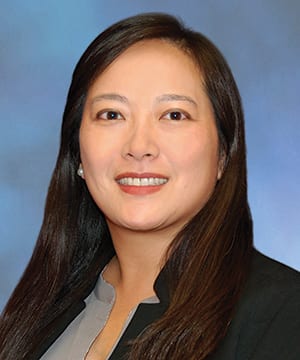 Janie Ho M.D., is a board-certified ophthalmologist, fellowship-trained in medical and surgical vitreoretinal diseases such as macular degeneration, diabetic retinopathy and retinal tears and detachments. She has been educated at some of America’s finest institutions. She received her Bachelor of Arts from Harvard University and her medical degree from Duke University. She went on to ophthalmology residency at the University of California, San Francisco. Following residency, Dr. Ho continued on to a fellowship in vitreoretinal diseases at the prestigious Massachusetts Eye and Ear Infirmary of Harvard Medical School. Dr. Ho has participated in angiogenesis research, investigating causes and treatment for common retinal disorders.
Janie Ho M.D., is a board-certified ophthalmologist, fellowship-trained in medical and surgical vitreoretinal diseases such as macular degeneration, diabetic retinopathy and retinal tears and detachments. She has been educated at some of America’s finest institutions. She received her Bachelor of Arts from Harvard University and her medical degree from Duke University. She went on to ophthalmology residency at the University of California, San Francisco. Following residency, Dr. Ho continued on to a fellowship in vitreoretinal diseases at the prestigious Massachusetts Eye and Ear Infirmary of Harvard Medical School. Dr. Ho has participated in angiogenesis research, investigating causes and treatment for common retinal disorders.
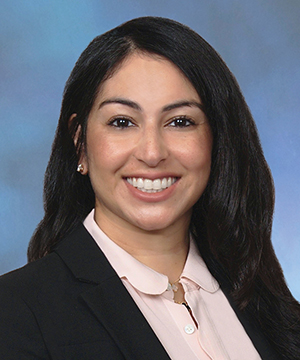 Sejal Shah M.D., is a board-certified, fellowship-trained Retina Specialist. Dr. Shah received her medical degree from the University of South Florida. She began her postgraduate training with an internship in medicine at UCLA, followed by ophthalmology training at the University of South Florida. She went on to complete a fellowship at the prestigious Bascom Palmer Eye Institute, specializing in the diagnosis and treatment of retinal disorders. Dr. Shah also earned a B.S. degree with honors in Nutritional Science from the University of Florida. Dr. Shah brings her expertise as a medical retinal specialist with skills in managing and treating vitreoretinal pathology which including age-related macular degeneration and diabetic retinopathy. Her research has appeared in publications such as Ophthalmic Surgery, Lasers, and Imaging Retina; Clinical Ocular Oncology; Survey of Ophthalmology; International Ophthalmology Clinics; and Survey of Ophthalmology. In her spare time, she enjoys spending quality time with her family and friends, traveling, and trying to keep up with her twin boys.
Sejal Shah M.D., is a board-certified, fellowship-trained Retina Specialist. Dr. Shah received her medical degree from the University of South Florida. She began her postgraduate training with an internship in medicine at UCLA, followed by ophthalmology training at the University of South Florida. She went on to complete a fellowship at the prestigious Bascom Palmer Eye Institute, specializing in the diagnosis and treatment of retinal disorders. Dr. Shah also earned a B.S. degree with honors in Nutritional Science from the University of Florida. Dr. Shah brings her expertise as a medical retinal specialist with skills in managing and treating vitreoretinal pathology which including age-related macular degeneration and diabetic retinopathy. Her research has appeared in publications such as Ophthalmic Surgery, Lasers, and Imaging Retina; Clinical Ocular Oncology; Survey of Ophthalmology; International Ophthalmology Clinics; and Survey of Ophthalmology. In her spare time, she enjoys spending quality time with her family and friends, traveling, and trying to keep up with her twin boys.

